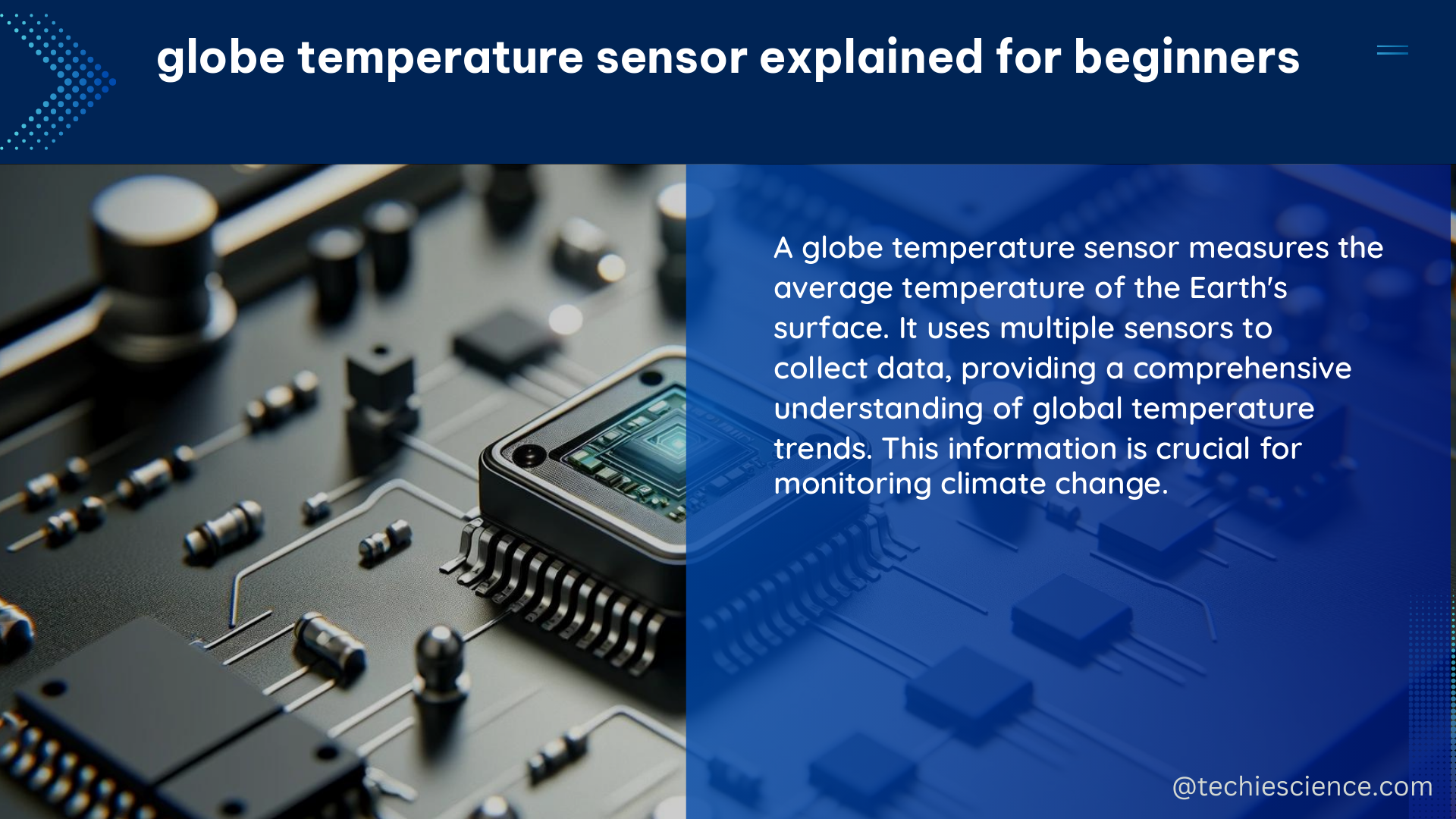A globe temperature sensor, also known as a globe thermometer, is a device used to measure the temperature of a surface or environment. It typically consists of a blackened, hollow copper sphere mounted on a stand, with a thermometer inserted into the sphere to measure its temperature. The sphere is designed to absorb and emit heat efficiently, making it an effective tool for measuring radiant heat.
Understanding the Technical Specifications
The technical specifications of a globe temperature sensor can vary depending on the manufacturer and intended use. Let’s dive into the details:
Sphere Diameter
Globe temperature sensors are available in a range of sphere diameters, typically ranging from 5 to 15 cm. A larger sphere diameter allows for a more accurate measurement of radiant heat, as it has a larger surface area for absorbing and emitting heat. For example, a 15 cm diameter sphere has a surface area of approximately 706 cm², while a 5 cm diameter sphere has a surface area of only 78 cm².
Thermometer Type
Globe temperature sensors can use various types of thermometers, such as mercury or alcohol, to measure the temperature of the sphere. The choice of thermometer type may depend on the desired temperature range and accuracy. Mercury thermometers are typically accurate to within 0.1°C, while alcohol thermometers may have a slightly lower accuracy of 0.2°C. Digital thermometers with probes can also be used, offering a wider temperature range and higher precision, with accuracies of up to 0.01°C.
Mounting Options
Globe temperature sensors can be mounted on a stand or attached to a surface using various methods, such as clamps or adhesive. The mounting method may depend on the intended use and location of the sensor. For example, a stand-mounted sensor may be more suitable for indoor environments, while a surface-mounted sensor may be better suited for outdoor applications.
Environmental Protection
Globe temperature sensors may be designed to protect the thermometer and sphere from environmental factors, such as wind or precipitation. This can include features such as a shield or housing around the sphere, which can help to minimize the impact of external factors on the temperature measurement.
Using a Globe Temperature Sensor

To use a globe temperature sensor, it is typically placed in the environment or on the surface to be measured and allowed to reach thermal equilibrium. The time required for the sphere to reach equilibrium can vary depending on factors such as the size of the sphere, the temperature difference between the sphere and the environment, and the air movement around the sphere.
Once the sphere has reached thermal equilibrium, the temperature of the sphere is recorded using the thermometer. The temperature reading can then be used to calculate various heat-related quantities, such as the mean radiant temperature or the heat index.
The mean radiant temperature (MRT) is a measure of the average temperature of the surrounding surfaces that emit radiant heat. It is an important factor in determining the thermal comfort of an environment, as it takes into account the effects of both air temperature and radiant heat sources. The heat index, on the other hand, is a measure of the perceived temperature based on both air temperature and humidity.
DIY Globe Temperature Sensor
If you’re interested in creating your own globe temperature sensor, you can follow these steps:
-
Obtain a Copper Sphere: Start by obtaining a hollow copper sphere with a diameter of at least 5 cm. You can purchase a sphere from a hardware store or online, or you can make your own using a balloon and copper wire.
-
Paint the Sphere Black: Paint the surface of the copper sphere black to improve its ability to absorb and emit heat. This can be done using a high-temperature black paint or spray paint.
-
Insert a Thermometer: Insert a thermometer into the center of the sphere. You can use a mercury or alcohol thermometer, or a digital thermometer with a probe.
-
Mount the Sensor: Mount the sphere on a stand or attach it to a surface using clamps or adhesive. The mounting method will depend on the intended use and location of the sensor.
-
Allow for Thermal Equilibrium: Place the sensor in the environment or on the surface to be measured and allow it to reach thermal equilibrium. This may take several minutes, depending on the size of the sphere and the temperature difference between the sphere and the environment.
-
Record the Temperature: Once the sphere has reached thermal equilibrium, record the temperature using the thermometer.
By following these steps, you can create a simple and effective globe temperature sensor for your own use or experimentation.
Conclusion
The globe temperature sensor is a versatile and accurate tool for measuring the temperature of a surface or environment, particularly when it comes to radiant heat. By understanding the technical specifications and proper usage of this device, you can gain valuable insights into the thermal conditions of your surroundings and make informed decisions about heating, cooling, and other thermal management strategies.
References
- Guy Blythman, “The Second Coming is Imminent,” accessed on May 10, 2024, https://www.guyblythman.com/pages/the-second-coming-is-imminent.
- “Handbook of Formulating Dermal Applications,” accessed on May 10, 2024, https://repository.poltekkes-kaltim.ac.id/1181/1/26.%20Handbook_of_Formulating_Dermal_Applications.pdf.
- “Building Performance Simulation for Design and Operation,” accessed on May 10, 2024, https://www.academia.edu/4961552/Building_Performance_Simulation_for_Design_and_Operation.

The lambdageeks.com Core SME Team is a group of experienced subject matter experts from diverse scientific and technical fields including Physics, Chemistry, Technology,Electronics & Electrical Engineering, Automotive, Mechanical Engineering. Our team collaborates to create high-quality, well-researched articles on a wide range of science and technology topics for the lambdageeks.com website.
All Our Senior SME are having more than 7 Years of experience in the respective fields . They are either Working Industry Professionals or assocaited With different Universities. Refer Our Authors Page to get to know About our Core SMEs.